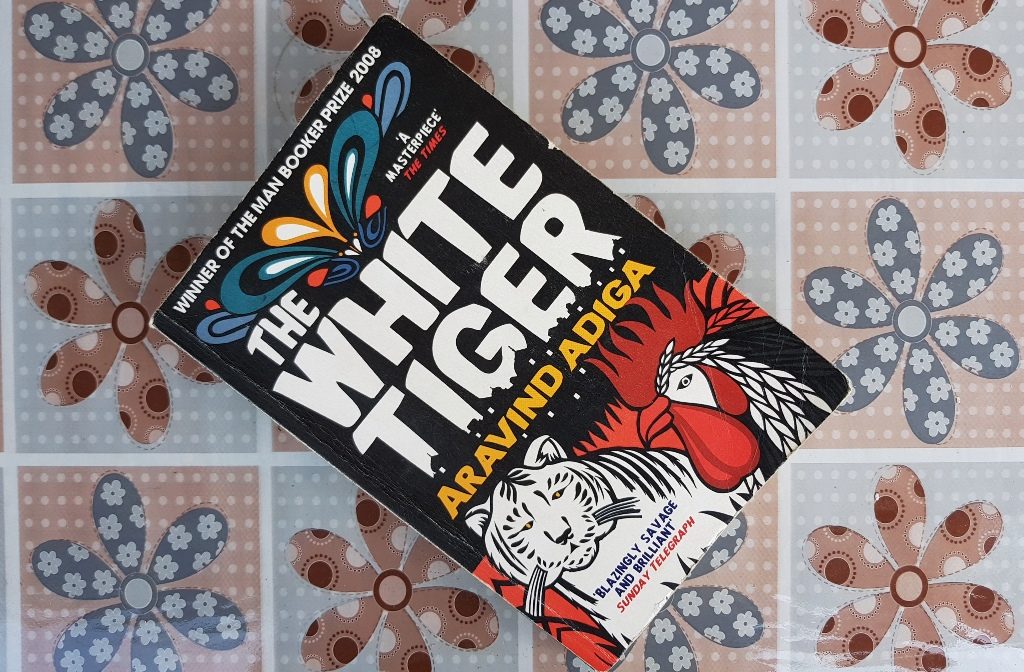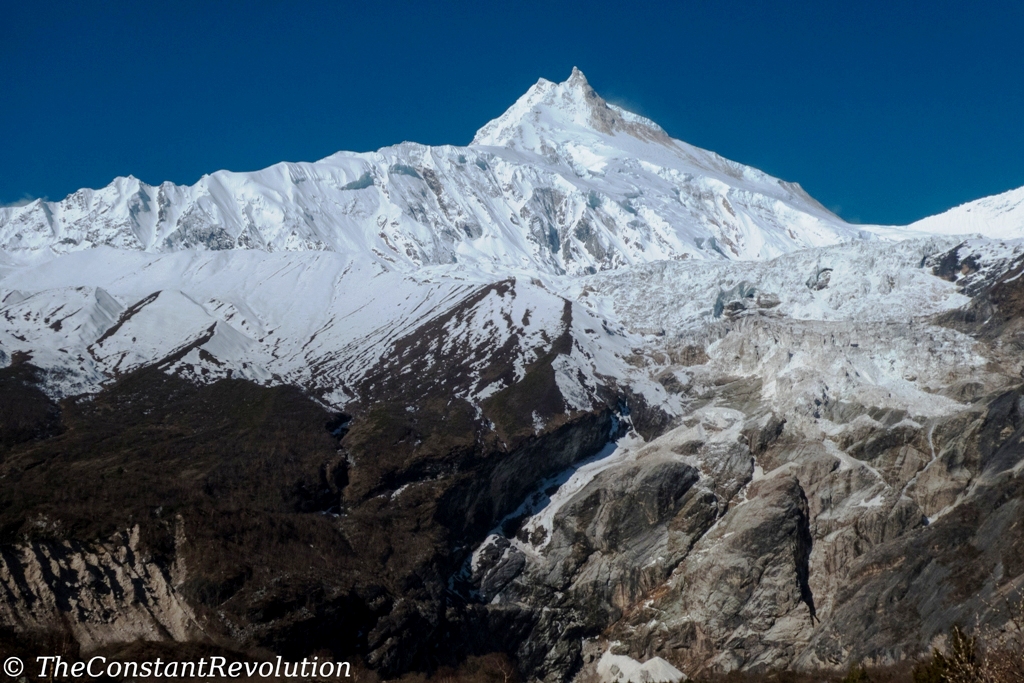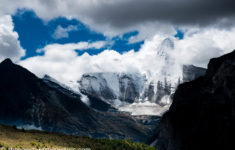The meditation technique taught by the Buddha himself can be learnt in 10 days, an intense retreat that will put your inner strength to the test, but can be highly rewarding and bring benefits for both spirit and mind.
After years of mulling over it, what better place to finally take a Vipassana course than India, where this practice was created over 2,500 years ago, by no less than the Buddha himself? So, I enrolled last minute for the retreat at Dhamma Thali, in Jaipur. A quiet place surrounded by a forestry area, with a big garden, playful monkeys, lots of birds and squirrels, and an invasion of peacocks.

I had never practised any other type of meditation before, so I had no idea what to expect. Well, it was a challenge alright, but totally worth taking, as there is so much to learn from it.
The intensity of the course is certainly a test of character. In the end, I have learnt understood the technique and its potential benefits, but also deepened my understanding of what the Buddha taught. This is invaluable to me, as a seeker of spiritual and intellectual experiences. Finally, something happened that reminded me of a very important life lesson.
Here’s an account of what it means to take the course, and the lessons learnt. It’s a little long, hehe, apparently 10 days of silence resulted in a stream of words 😉
10 DAYS OF MONASTIC LIFE
Yep, that’s exactly what it is. First of all, there’s the noble silence, no talking, only with the teacher if you have a question and in specific times of the day, otherwise you need to shut it for 10 days. It’s no regular silence either, it also means no looking in the eyes, no physical contact, no interaction whatsoever with other people in the course, no reading or writing, no interaction with the external world, no physical exercise (only strolling around the garden is allowed). In other words, the Vipassana course strips you of everything but your clothes, and your inner self. Be ready for that.

I must say this wasn’t so hard to me, the silence. Yes, sometimes when you are meditating and you are supposed to feel some sensations on your body, you do have that urge of poking the guy sitting next to you and go “Pssssst, dude, feeling anything? Nothing here!” or when you finally get it you want to look at someone in the eyes with a sparkly, victorious look as in “yep, I did it, me good”. But, when you see how everyone’s focused, you go back to your thing. People support each other just by showing commitment. That’s why those who don’t follow the rules are such disturbing elements in this context.
A little tougher is the schedule, with the alarm clock going off at 4 AM, and the 10 hours of meditation that follow, short breaks only after meal times. By the way, there’s basically only two meals, breakfast at 6:30 AM, and lunch at 11 AM. At 5 PM there’s a kind of snack plus tea thing, but that’s all. Food is simple and vegetarian (vegan if you exclude a glass of milk), no extra food or drinks allowed. Most people get really hungry, it’s pretty funny to see how everyone gathers around just before meals time, waiting for the bell sound that marks the end of the session to vibrate in the air in order to run walk speedily towards the dining room.

The immobility and the need to focus for such a long time were both really tough. For the first, there’s nothing much to do, you just have to apply willpower. Dontmove dontmove dontyouf..move! For the second point, there are actual improvements day by day through the meditation itself.
TRAINING FOR THE MIND
A big misconception about meditation might be to believe, like I did, that it’s some kind of intellectual, or relaxation exercise. Not at all, not this one at least! Meditation is training, pure physical training, for the mind.
By understanding this simple truth, my motivation boosted. It’s just like in sports, you keep trying until you manage to achieve the results you have set for yourself. The mind responds to the training, just like the body does, each person with its own pace. If you are used to this type of effort, then you know where to find the inner strength to commit, and keep trying even when you have the impression of failing.
ANAPAMA: WHEN THE MIND SLIPS AWAY
Two types of techniques are taught during the course. The first is called Anapana meditation, a technique based on the observation of respiration, necessary to sharpen the mind and learn how to concentrate. I was impressed by how much my attention would wander away from my breathing. It’s kind of hard not to get nervous about it, which would be detrimental of course.
Like a horse that doesn’t want to be ridden, the mind tries everything to obstruct your attempt to focus before giving up. I have never had such a series of random, and absolutely unrelated images popping up in my head like during this experience. Faces I had forgotten, music I don’t even like, imaginary situations or conversations, the pipe of René Magritte, the red eye of Terminator, whatever. I mean, not even important things, which are probably easier to consciously keep at bay, just random obstruction.

Funnily, during the Anapana part, often images from the anime Naruto Shippuden popped up. You know, when he’s training to gather natural energy to become a sage… well, whoever has seen the series knows what I am talking about. I thought it kind of made sense though, as the story of this anime, besides all the cool ninja stuff, is one of personal growth, and overcoming difficulties with one’s own strength, and become a better person. Wasn’t this exactly what I was trying to do? Ah, the subconscious at work!
There might be a biological explanation for this mind-obstruction tough. In a state of nature, our mind has to always be aware of its surroundings to identify dangers: the attention is widespread rather than focused on a single point. It is therefore only natural that it takes a conscious effort, and lots of training, to change this pattern and learn how to focus. But, it’s certainly possible.
Only after this phase, on day four, the second and main technique of meditation is taught: Vipassana.
VIPASSANA: A SENSORIAL EXPERIENCE
Another misconception about meditation I had, was to think it’s some kind of mystical art. Not even close! Vipassana is a sensorial experience through and through.

A certain reality of the body is the focus, the mind is the means to reach it. In other words, Vipassana is a technique that allows perceiving a reality otherwise precluded to our senses. It allows perceiving reality as it is: not the one it seems to be, not the one we would like it to be, just reality as it is.
This isn’t any kind of mystical energy, or force, or anything that metaphysical. It’s literally, and physically, a smaller level of reality where there are forces at work that normally we can’t perceive: from the beating of our hearth to the generated heating of our body; from the death and rebirth of our cells to (at very advanced level) the movement of atomic or sub-atomic particles.
This is what Vipassana wants you to learn, and in order to understand how to do it, those 10 days are necessary, as they take you step by step into perceiving that deeper state of things as a flow through the body. It can actually be quite a pleasant sensation, and that’s where it gets tricky. Keep this in mind, I’ll get back to it.
The next question, and it is as hard as it is crucial, is why. Why should I sharpen my perceptions to that point? In order to answer this question, I need to step back a sec and talk about what the Buddha taught.
THE BUDDHA’S REVOLUTION
An interesting part of the Vipassana course is that it is taught worldwide with the same method, as instructed, and with the voice, chants, and videos of S.N. Goenka. The teachers on site are just supporting. Every evening, a one hour and a half video lessons from Goenka makes the point about Vipassana, but also about how it is linked to the Buddhist moral and doctrine. I was already doing some readings on Buddhism myself, so this really helped to deepen my understanding of how this way of life of works.
There are three short points to make here about what the Buddha taught in order to be fully liberated by the miseries of life.
Morality and Doctrine
The first point is morality. Just like for every religion, and for every person of good common sense, there are some moral rules to respect in life in order to have a positive Karma (the law of action and consequence). It’s the usual stuff: don’t kill, don’t steal, respect the others etc… It would be really abusive to think that full liberation could be reached if you are a criminal. But, it can be reached if you were a criminal, and you change your way of life, for example. As in, there’s always a chance to change, to redeem, to become a better person.
The second point is a doctrine. Very roughly (suggested readings below), the Buddha understood that mankind is born in misery and pain. He explained that this misery is innate in the way people get attached to things, desires, their own selves. The craving makes us miserable. Attachments to the past, which we obviously can’t change. Cravings for more things, more feelings, more of anything, that leave us constantly unsatisfied. The ultimate craving, the attachment to our own lives, the I, the self, as if we were at the centre of the universe instead of part of it, the irrational fear of death.
The law of nature
The Buddha understood, over 2,500 years ago, that everything in the universe has a beginning, everything constantly moves and constantly changes, and everything has an end. Such is the law of nature, the impermanence of all things. He did this through meditation, through feeling reality as it is. Only for this, he would deserve a posthumous Nobel Prize.
Anyways, today all of this has been confirmed by science too, from sub-atomic particles to cluster of galaxies, everything moves and changes, everything has a beginning and an end. This is reality as it is, as far as we know. Mankind is just stuck in some mid-levels where it can perceive only a small part of reality, but with the potential to improve.
Perceiving reality
The third point of what the Buddha taught, is Vipassana. It is not enough to understand reality at the intellectual level, said the Buddha. Actually, it is quite easy to understand it intellectually, but it does not help in getting out of our miseries. To do that, we need to perceive reality as it is at the physical level.
This is Vipassana meditation. This is the Buddha’s revolution, his great discovery, how Gautama Siddharta became the enlightened one, and his gift to humanity. He taught this technique until his very last breath to anyone who sought full liberation. He didn’t teach anything else besides the three points mentioned above.
It’s an exquisite, elegant, rational and objective approach to life. There are no Gods, no mystic forces, no weird energies flowing in the air in what the Buddha taught. There’s only human beings, their mind and body, their senses, and the need to become aware of reality as it is if they wish to liberate themselves from suffering. Such a wonderful mind this man must have had.
That’s it! The Buddha goes straight to the top of my favourite people of all times, followed by Albert Einstein, Sigmund Freud, and Kenshiro from Hokuto no Ken.
Vipassana and Buddhism
Waaaaaaaait a sec, my sceptic voice calling. Buddhism has rituals, statues, temples, and some other folkloristic things. True, and they have their value. To put it in the words of Walpola Sri Rahula, they “have their value in satisfying the religious emotions and needs of those who are less advanced intellectually and spiritually, and helping them gradually along the Path”. Buddhists believe in reincarnation, therefore there’s no hurry.
The millions of people who observe the morality and the doctrine, and go to the temple for a prayer from time to time to take “refuge in the Buddha”, are Buddhists of course. But, this is not what the Buddha taught, not the whole picture anyway. They will not be fully liberated, or reap other benefits of Vipassana. The technique isn’t an isolated feature of Buddhism, it’s inextricably linked to it, the only path to full liberation.
NOTHING IS PERMANENT
Now we can answer the question: why would we need to sharpen our mind to the point of perceiving such reality? Because becoming aware of reality as it is through a physical experience is the only way to become fully aware of the impermanence of all things. Something that needs to be constantly kept in mind during meditation.
Remember the pleasant sensation, the flow through the body I referred to above? One should always keep in mind that it is impermanent, that it arises and it passes away, and never get attached to it, or start craving it. That is the tricky part, but fundamental in the Vipassana teachings. That’s what you need to learn: nothing is permanent. But you can’t just understand it, you need to perceive it, you need to feel it, you need to be aware of it.
THE BENEFITS OF VIPASSANA
Vipassana literally means to see things as they really are. The teaching should ultimately help relativise on the ups and downs that life inevitably brings about, including the really bad times: everything rises and passes away, everything changes.
Vipassana helps becoming a better person as the whole teaching is based on the importance of love, and compassion (not unlike the message of other prophets to tell the truth) and helping others. Qualities that should develop naturally by practising. Furthermore, only through the observation of some important moral precepts the technique can develop.
By becoming physically aware of the unity of all things, we also become aware of what we really are. In the end, a mass of sub-atomic particles, just like everything else. In turns, this should keep our I at bay, and provide a whole new dimension to the importance we give to our Self.
Vipassana can help in dealing with the greater fear of all, death. It is said that fully liberated people feel death approaching, and welcome it as a natural happening, with a smile. Match that!
In daily life, it helps to be in the present, to enjoy the present moment as we become aware, for example, that the man who started to write this article does not exist any more, and now is another person. As we learn that every moment there is movement and change, we learn to stay here instead of wandering in some unlikely illusions.
This doesn’t mean that we can’t plan ahead, for example when to go on holiday, that is one concrete action. But, planning in our head exactly how the flight will go, how the food will taste, how much I’ll enjoy the journey, the colours of the landscapes I’ll see etc., will inevitably cause disappointment. Extend this to everything else.
THE HARD PATH OF VIPASSANA
Buddha is not a name, is a quality, it literally means the enlightened one. Everyone can become the Buddha, this is one of the teachings of Buddhism. But make no mistake, the path is neither easy nor short. This way of life requires a lot of commitment, patience, and hard work if one wants to reach full liberation.
The Buddha said that “One is one’s own refuge”. During the Vipassana class, several times Teacher Goenka repeated that we are all masters of ourselves. We can be shown the path, but no one is going to walk it for us. This is a last, important piece of wisdom I took away I was reminded of in this course, which has been a truly intense and interesting experience.
A LIFE LESSON I ALMOST FORGOT
When leaving the Vipassana centre, I and a friend I met there, had a little problem with the teachers and the management, and this reminded me of something really important.
The fact is that when they gave us back our phones, and passports, and we were allowed to talk and all, for me the learning process was over. So, I decided to leave, half a day before the official ending of the course. One evening speech was left, but I bought a book with all the speeches and read it myself. Just a review of what we did in the 10 days.
What a semi-tragedy that has become! We had to ask permission from the teacher, who refused to even listen to our reasons, turned around and left, very rudely. We talked to the management, who refused to listen to our reasons and kept repeating that we signed up until the end, like a broken record.
During all of this situation, I kept smiling, clearly a benefit from Vipassana in my case, while they got overexcited about this.
What I found really weird was the lack of empathy, the complete unwillingness to listen. I didn’t understand it. I am a 40 years old adult, highly educated, self-aware and self-conscious, and I didn’t feel that staying there for another half a day would have made any difference. I was tired, the learning was over, I would not have meditated any longer after the break of noble silence, I felt perfectly fine about re-entering the world, time to go.
As simple as that. If they had listened to me, and provided a real, convincing explanation as to why I shouldn’t go, I might have changed my mind. But no, they just threatened not to open the gate. Sure, as if they could keep me there. Especially after such a display of arrogance.
I found that turning a deaf ear against anyone reasons goes against the teachings of Vipassana. Where is the compassion in that? Where is the love?
I found that applying one rule to fit them all, or follow blindly the rules, is a behaviour fit for a cult, and it goes against what they were trying to achieve there.
I am sure the Buddha didn’t teach Vipassana in 10 Days retreats and would have never told anyone they can’t leave or threatened to keep them in. We are all masters of ourselves after all, aren’t we? Actually, the Buddha was using different words and a different language depending on who he was teaching to, which is the point of listening, observing, and understanding. Empathy, people!
In any case, once I realized that they would never listen, I kindly thanked them and said goodbye, turned around, and went with my friend towards the gate, determined to just jump over the fence. At that point, someone came to open… Jeeez!
I was a bit disappointed by this because everything else went well. I really enjoyed and found the course beneficial, and far from me is to think now that this is a cult. Not at all, and I warmly recommend this course to anyone who is interested in what I have explained in this article and is up for the challenge.
However, the situation reminded me of something important, a lesson I cherish for a long time: I should never rely on a single system of belief to deepen the understanding of myself or the world that is around me. That is why I write about this after all, because I want to try, to taste, to understand, to explore, and never stop feeding my curiosity. That is who I am.
Vipassana is a great technique, I’ll try to continue the practice, perhaps in the future I’ll participate in more retreats. But there are many ways to understand ourselves, and the universe, and find balance within it: other techniques of meditation, other Eastern and Western philosophies and ways of life, science, all the creative arts, sport, travel, life experiences… everywhere there is something to learn, something that helps our personal growth, and in everything we can find meaning.
As good as it is, Vipassana remains one tool, among many, to find real peace, real harmony, real happiness.
Suggested readings:
The two books about Buddhism I read in preparation for the course are:
– What the Buddha Taught by Walpola Sri Rahula
– The Four Noble Truths by the Dalai Lama
Featured image credits: https://unsplash.com/@grakozy
The spiritual adventures of the Constant Revolution will return 😉








Brilliant article. Very insightful and honest. Thanks!
Thank you! 🙂
Love it. Well done and well written.
Thanks Molly! Where are you? What are you doing? Are you travelling? Do you have a new desk? Give me some news 🙂
I’m back in MN! Working hard and back into a routine. I have some trips planned for the coming months! Hope you’re well, my friend.